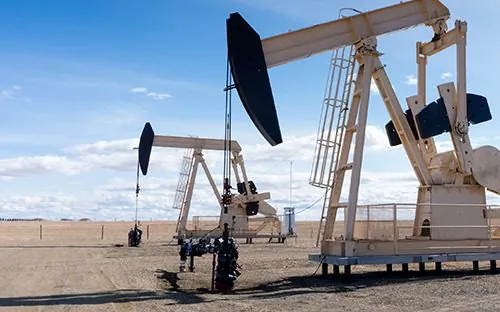In the oil and gas industry, pumps are the unsung heroes quietly driving operations both upstream, midstream, and downstream. They move crude oil, natural gas, and refined products from extraction points to processing facilities and finally to the end consumer.
Whether it’s lifting crude oil from wells, transporting it through miles of pipeline, or maintaining pressure in refineries, pumps are indispensable in ensuring that operations run smoothly. However, even the best pumps can face issues without proper monitoring, leading to inefficiencies and costly downtimes. This is where the significance of pump monitoring comes into play—optimizing performance, increasing production efficiency, and ensuring asset longevity.
Overview of Types of Pumps in Upstream, Midstream, and Downstream Operations
Upstream Operations
In upstream operations, the primary focus is on extracting hydrocarbons from the earth. Here, you will commonly find:
- Centrifugal Pumps: Used for moving large volumes of fluids efficiently.
- Reciprocating Pumps: Ideal for managing high-pressure applications such as fracking.
- Progressing Cavity Pumps: Excellent for handling highly viscous fluids and slurries.
Midstream Operations
Midstream operations deal with the transportation and storage of crude oil and natural gas, typically involving:
- Pipeline Pumps: Large centrifugal pumps that push oil or gas through pipelines over long distances.
- Booster Pumps: Installed throughout pipelines to maintain pressure and flow rates.
- Transfer Pumps: Used at storage facilities to move products into and out of storage tanks.
Downstream Operations
Downstream operations focus on refining and distributing end-products. Here, pumps are essential for:
- Process Pumps: Handling a variety of fluids and chemical mixtures within refineries.
- Metering Pumps: Providing precise fluid control for additives and blending processes.
- Loading Pumps: Transferring refined products into transportation systems like tanker trucks and rail cars.
The Role of Pump Monitoring in Enhancing Production Efficiency and Preventing Downtime
Pump monitoring is a critical component in optimizing oil and gas production. Here’s how advanced monitoring can make a significant difference:
Production Efficiency
Monitoring pumps in real-time allows operators to track performance metrics such as flow rate, pressure, temperature, and vibration. This data helps in:
- Identifying inefficiencies.
- Adjusting operational parameters to maintain optimal pump performance.
- Reducing energy consumption.
Preventing Downtime
Unscheduled downtime is one of the biggest operational challenges in the oil and gas industry. Pump monitoring systems can detect early signs of wear and tear, component failure, or other anomalies, enabling:
- Predictive maintenance and timely repairs.
- Reduced likelihood of sudden breakdowns.
- Prolonged equipment life.
Advantages of Adopting Advanced Technologies for Pump Monitoring
Embracing advanced pump monitoring technologies can bring numerous advantages to oil and gas operations:
Enhanced Data Accuracy
Technologies like radar level transmitters provide precise measurements of fluid levels in storage tanks and pipelines, allowing for accurate pump control.
Real-Time Monitoring
IoT-enabled sensors and cloud-based platforms enable real-time data collection and analytics, offering insights that can be acted upon immediately.
Improved Safety
Automated monitoring reduces the need for manual inspections, minimizing human exposure to hazardous environments.
Cost Savings
By optimizing pump performance and preventing failures, companies can significantly reduce maintenance costs and downtime-related losses.
Best Practices for Implementing and Utilizing Pump Monitoring Strategies
Successfully implementing pump monitoring strategies involves several best practices:
Choose the Right Technology
Select monitoring technologies that best suit your specific operational needs, whether they are radar level transmitters for precise fluid management or IoT sensors for real-time data.
Integrate with Existing Systems
Ensure that your monitoring solutions are compatible with existing SCADA systems and other industrial control systems for seamless data integration.
Train Your Staff
Invest in training programs to help your staff understand how to use monitoring tools effectively and interpret the data insights they provide.
Regularly Review Data
Consistently analyze monitoring data to identify trends, predict potential issues, and make informed decisions.
Schedule Maintenance
Use predictive data to plan maintenance activities during scheduled downtimes, reducing the risk of unexpected failures.
Future Trends in Pump Monitoring and Their Potential Impact on the Industry
The future of pump monitoring in the oil and gas industry looks promising with several emerging trends:
Artificial Intelligence and Machine Learning
AI and ML algorithms can analyze vast amounts of pump data to predict failures and optimize performance automatically.
Advanced Analytics
Enhanced analytics platforms will provide more actionable insights, helping operators make data-driven decisions.
Edge Computing
By processing data closer to the source, edge computing will enable faster response times and reduce latency issues associated with cloud computing.
Blockchain for Data Integrity
Blockchain technology can ensure data integrity and security, making pump monitoring data tamper-proof and reliable.
Conclusion
In conclusion, pump monitoring is not just a luxury but a necessity for modern oil and gas operations. By leveraging advanced technologies and best practices, companies can significantly enhance production efficiency, prevent costly downtimes, and ensure the longevity of their critical assets. As the industry evolves, staying ahead of trends and continuously improving your pump monitoring strategies will be key to maintaining a competitive edge.

